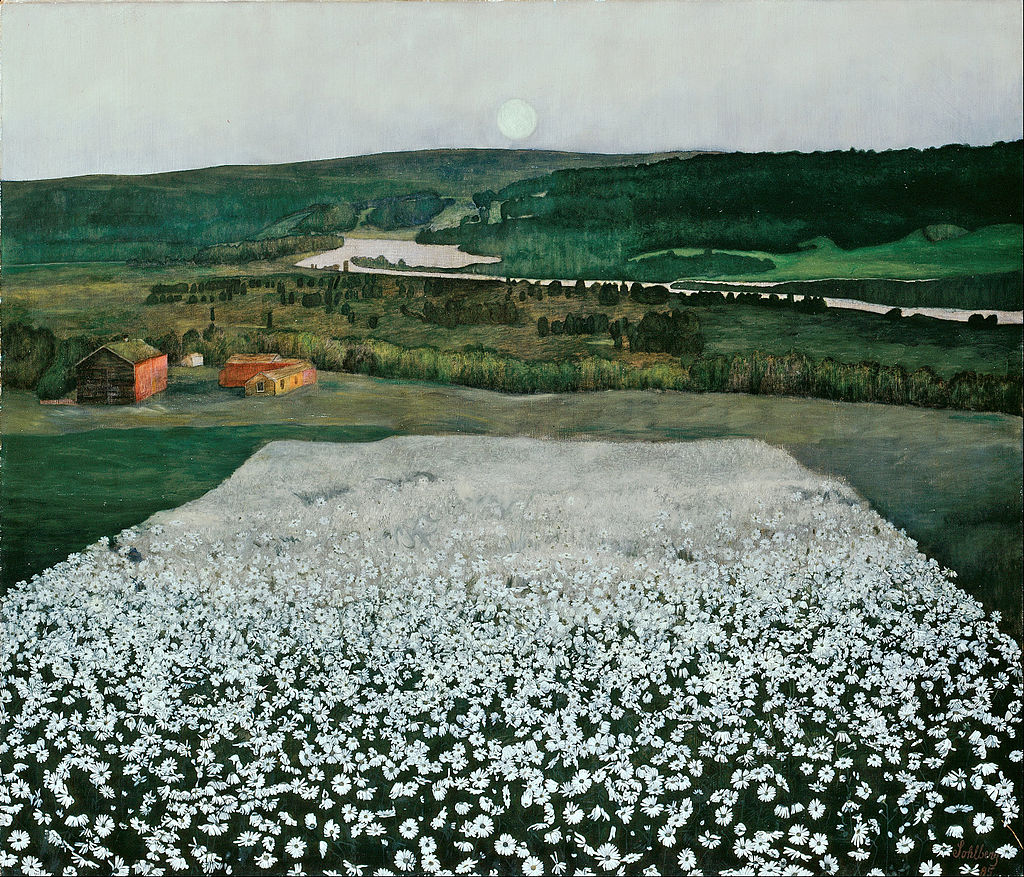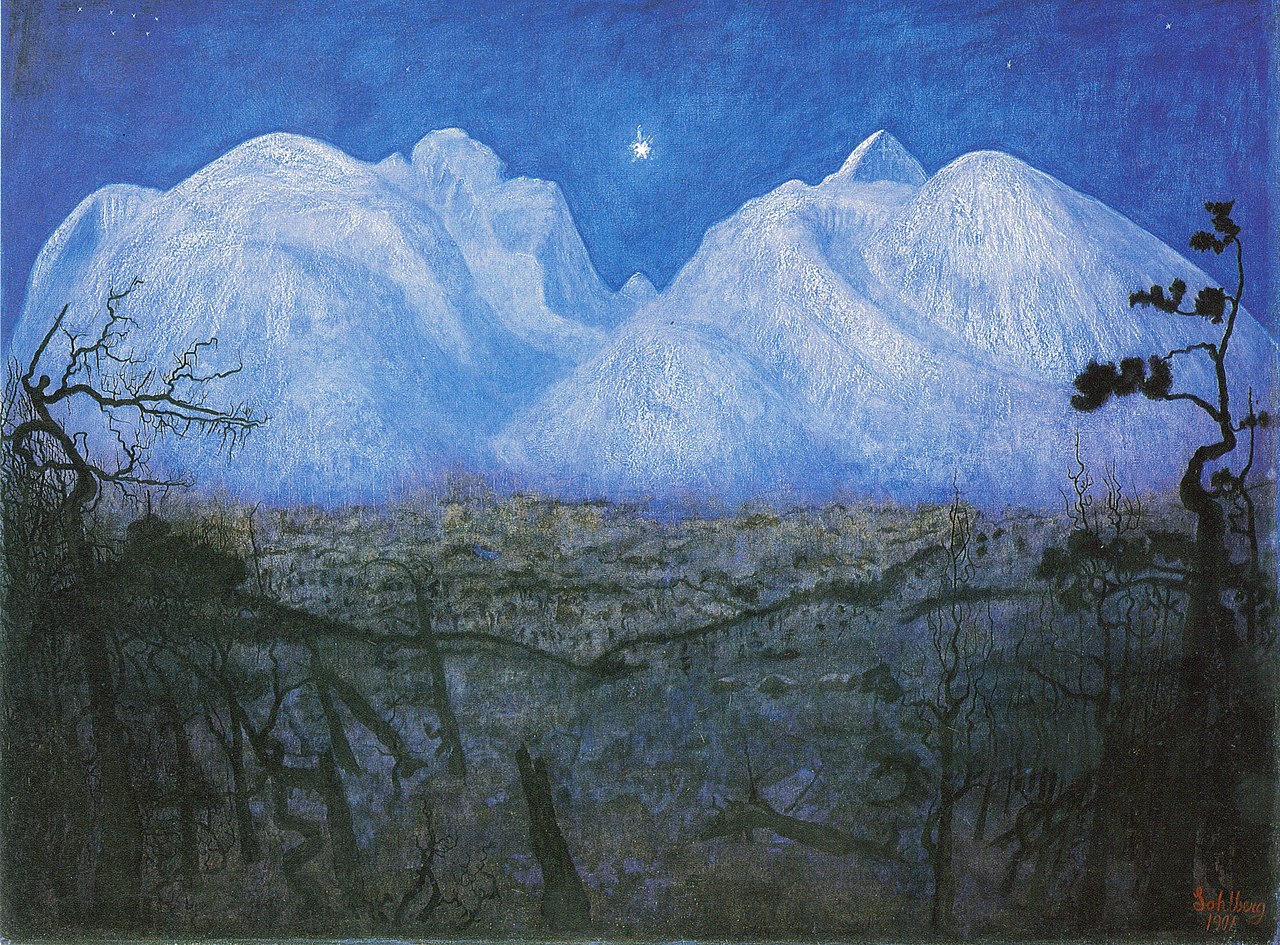Harald Sohlberg, Flower Meadow in the North, 1905
Images: Wikimedia Commons
The catalogue includes his beautiful study of daisies in pen and pencil - it reminded me of the gentle precision of Laurie Clark's flower drawings. Looking at the full size painting as opposed to a reproduction, I was really struck by the way the flowers in the foreground seem to float loose from the canvass. Your eye is led from them to those dark bushes which, as the curators point out, resemble an assembly of figures. Then, beyond these, the silvery-white river and low sun. It all looks so fresh and modern and yet the frame and label don't look as if they have been cleaned for a century, reminding you of how much time has actually passed since Sohlberg sketched these flowers and view of a river, so as to combine them in his memorable composite image.
Harald Sohlberg, Winter Night in the Mountains, 1914
I could talk here about many of Sohlberg's paintings but will focus here on Winter Night in the Mountains, (1914) described by Øivind Storm Bjerke in his catalogue essay as 'arguably the most compelling symbolic expression of the sublime in Norwegian painting'. The exhibition also includes other versions and sketches dating back to 1899, when Sohlberg first visited the mountains on an arduous eight-day ski trekking holiday 'organsied as a kind of polar expedition'.
Winter Night in the Mountains is initially most striking for its colours, although this could be said of almost all Sohlberg's paintings. The blue that dominates the upper half of the painting in 1901 is everywhere in the 1914 version. Øivind Storm Bjerke discusses the influence of colour symbolism in the nineteenth century, going back to Romanticism and the Blue Flower of Novalis and stretching to Edvard Munch, who had used a reduced palette in his recent paintings.
Although Sohlberg's contemporaries were painting mountians (Hodler and Segantini, for example), he was more familiar with the legacy of Norwegian Romantic artists like Johan Christian Dahl and Thomas Fearnley. What really impresses me about this painting is not the mountain peaks, but that mysterious foreground, framed by branches, which is more or less detailed depending on the version of the painting. A photograph in the catalogue shows the darker lines to be ridges of distant fir trees. Sohlberg said of this foreground that it should not be too crowded or too desolate, 'for it is here that the night and the fear in the picture should lie.'
Harald Sohlberg, Winter Night in the Mountains, 1901
Rondane and its mountains had already inspired nineteenth century writers, including Ibsen whose Hall of the Mountain King is beneath Rondslottet. Aasmund Olavson Vinje's poem 'At Rondane' (1864) was set to music by Edvard Grieg in 1880 - Sohlberg himself used to play Grieg's piano works and probably knew this piece. And there was Theodor Caspari's book, Norwegian Mountains (1898), with illustrations by contemporary artists. This included a poem urging the reader to ascend and gaze over the mountain valleys, but also to 'lower your sights' and experience the lichen and mosses growing on the rocks. This dual vision - far and near - is what Sohlberg achieved so perfectly in paintings like Flower Meadow in the North.



No comments:
Post a Comment